Hello everyone!
Today, I'm taking you on a walk through a place full of charm and history: the historic Lahboul Garden in Meknes.
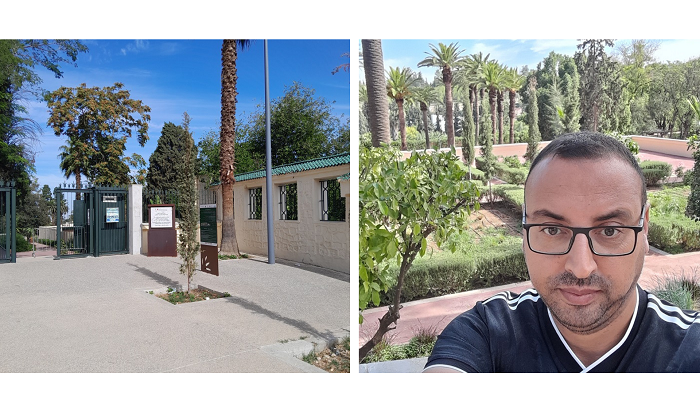
Located right in the heart of Meknes, Lahboul Garden is a place where peace and nature blend harmoniously with the history of this imperial city. This historic garden was created during the reign of Sultan Moulay Ismaïl in the 18th century, at a time when Meknes was at the centre of royal attention. It served not only as a resting place for the royal family, but also as a refuge for the inhabitants of the city of Meknes seeking to escape the hustle and bustle of the medina.
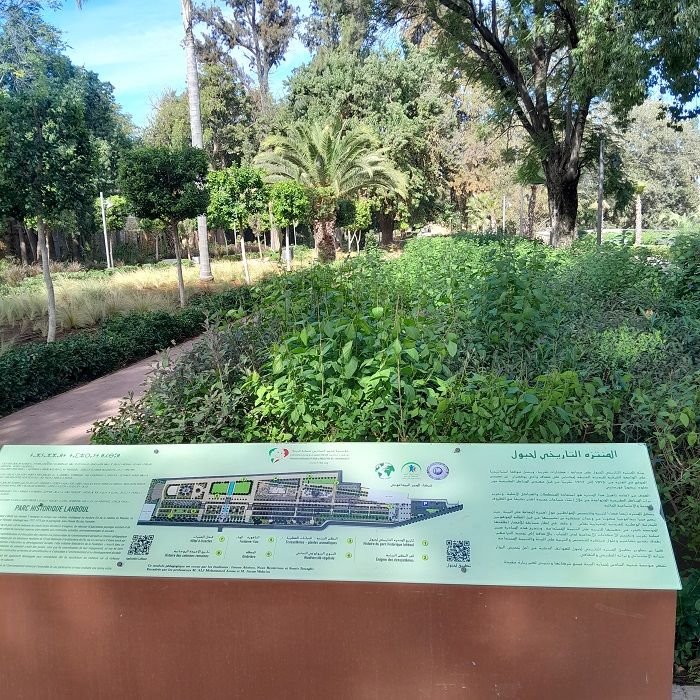
In the foreground is an information panel with text in Arabic and French. The panel includes a detailed map of the garden, entitled ‘Parc Historique Lahboul’, and provides information on the layout and features of the park. There are also QR codes and logos of organisations involved in maintaining or promoting the park.
Walking through the lush green alleys, I was struck by the impressive variety of plants and trees.
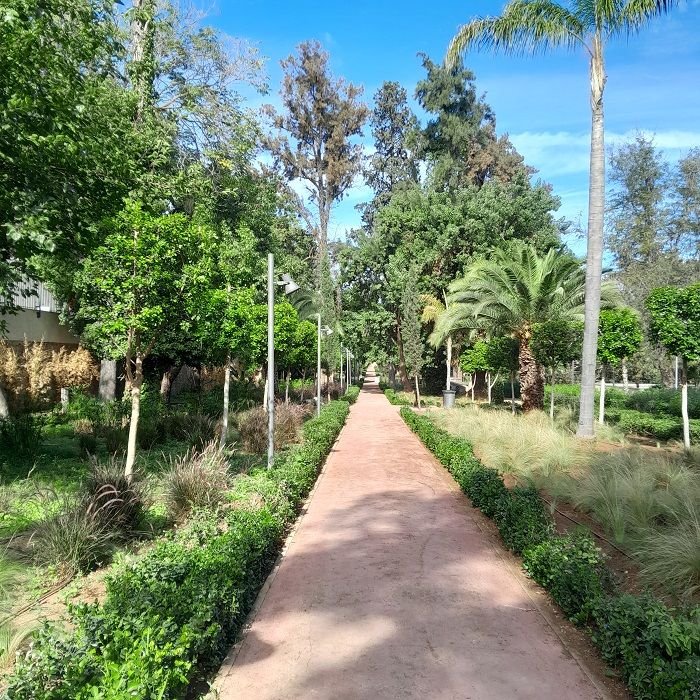

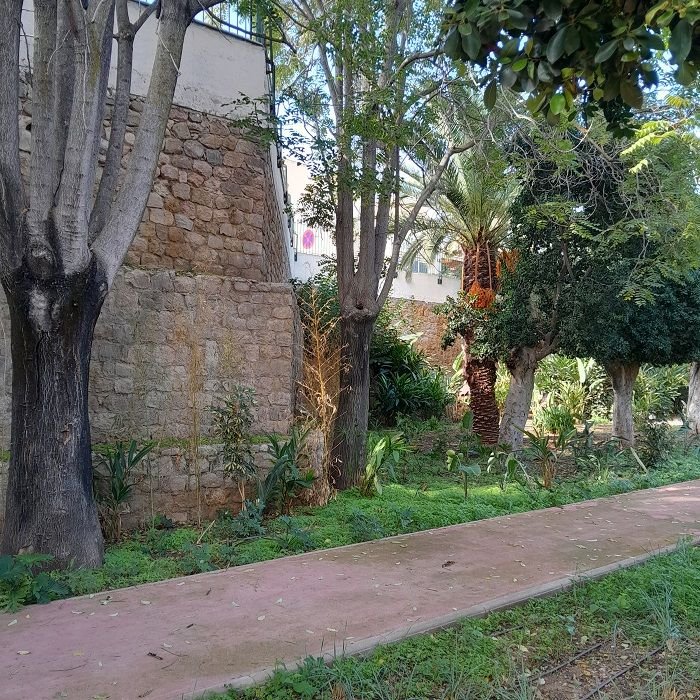
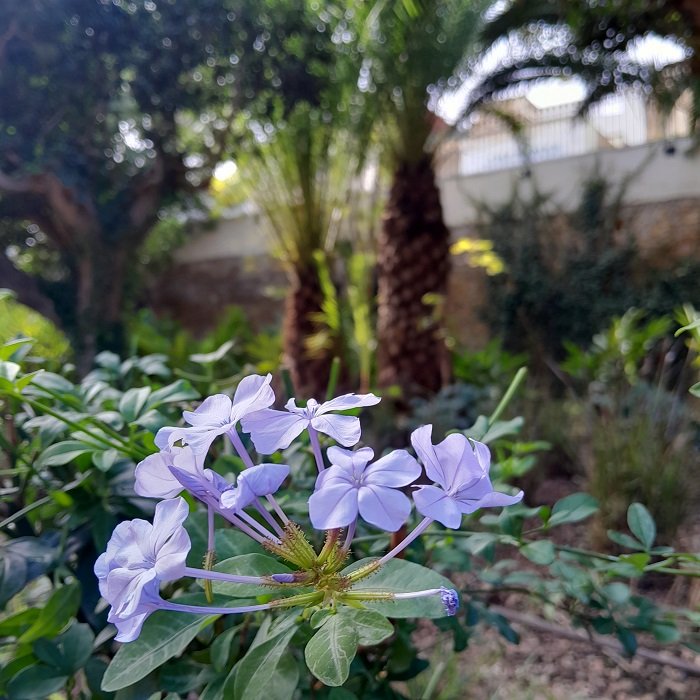
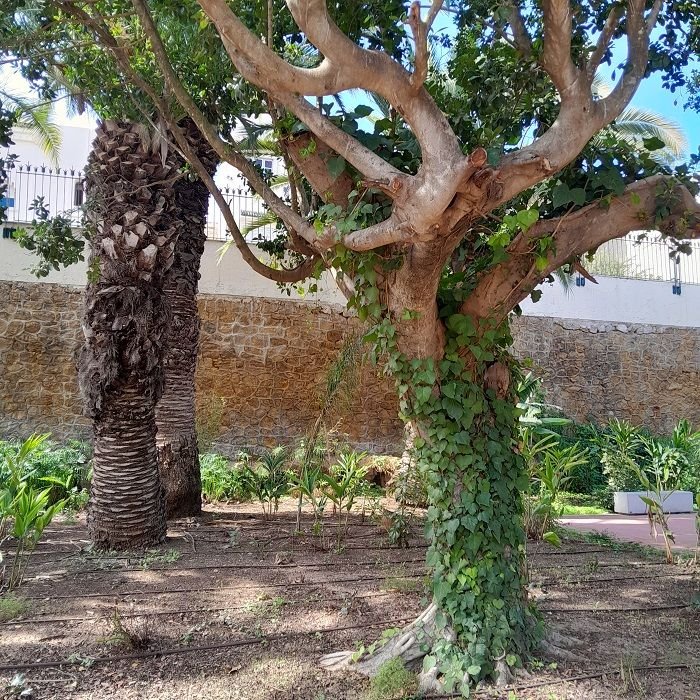
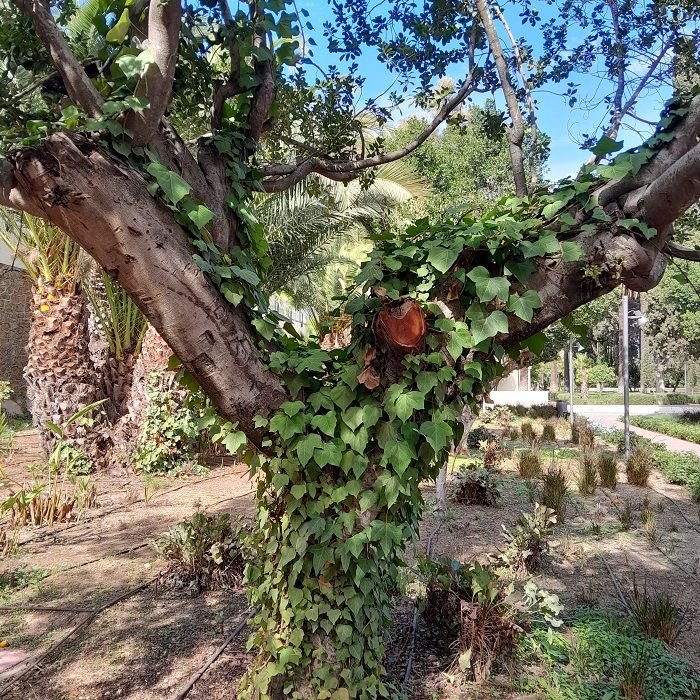
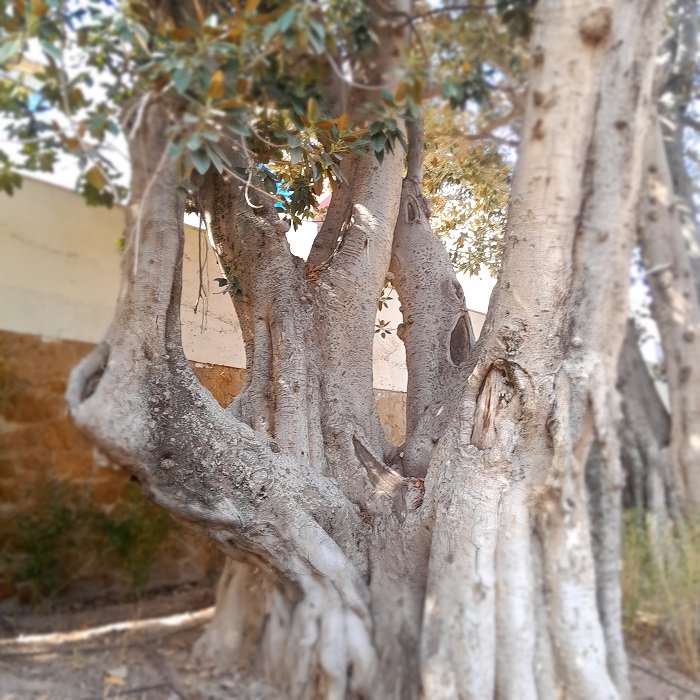
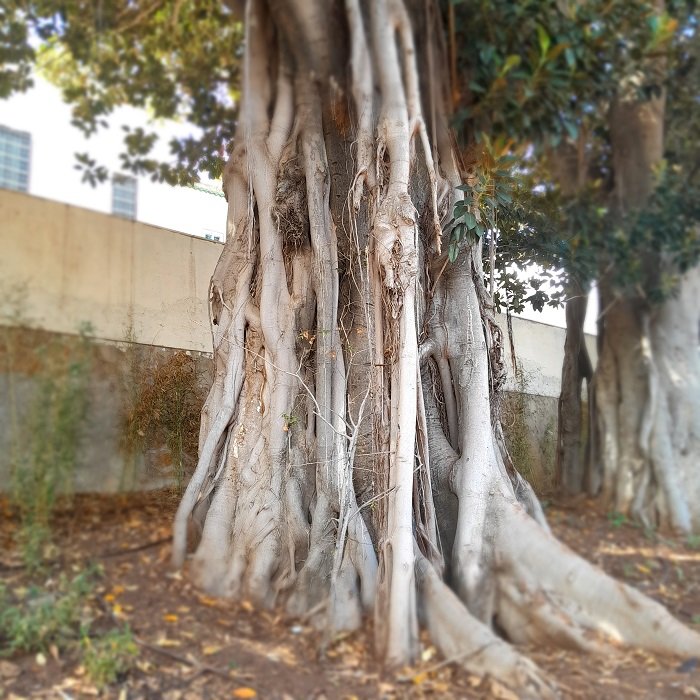
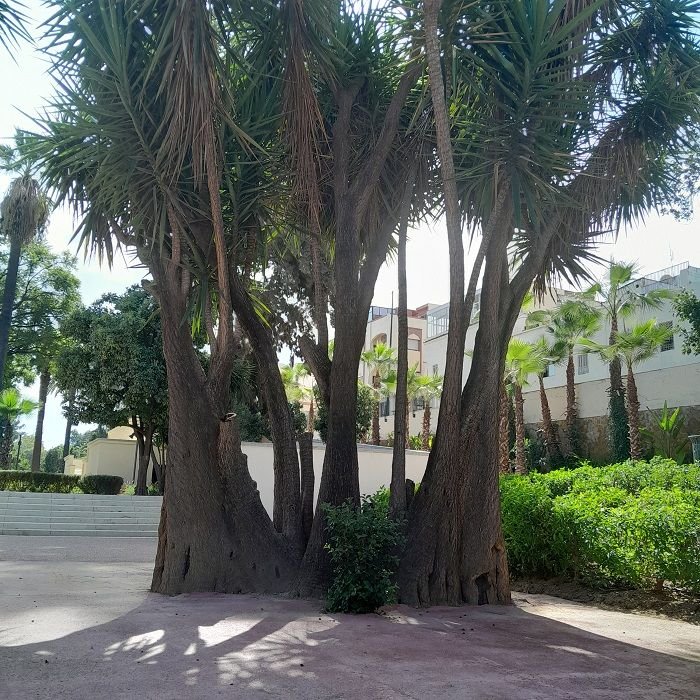
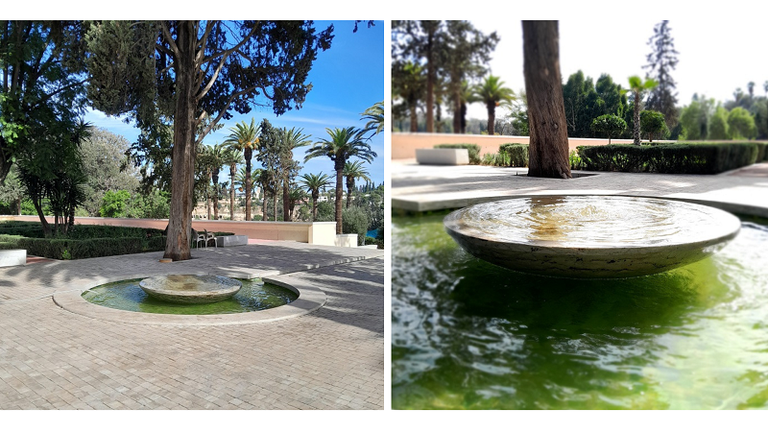
A soothing circular fountain. The structure, shaped like a large shallow bowl, is filled with clear water that seems to swirl gently. The water in the fountain is clear, while the surrounding water in the basin has a greenish tinge, probably due to algae or reflections from the surrounding greenery. In the background, there is a paved area with trees, shrubs and other plants, suggesting that this fountain is part of a landscaped garden or park. The scene is serene and aesthetically pleasing, making this an interesting feature for visitors.
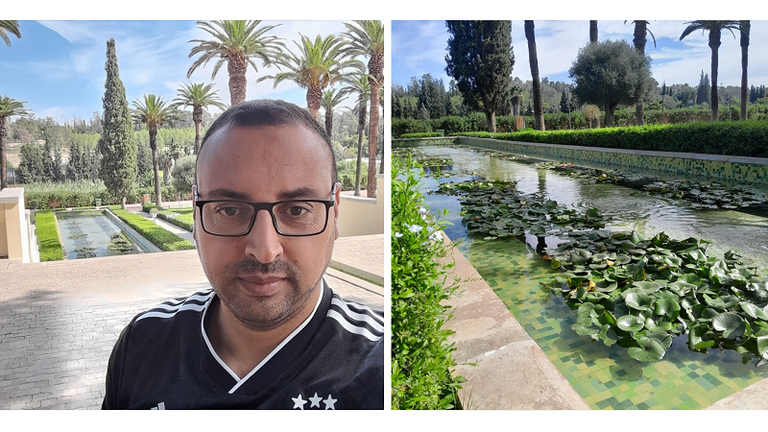
This is a rectangular pool with a mosaic-tiled background in shades of green, filled with floating water lilies. The pond is surrounded by lush greenery, including bushes and trees such as palms and cypresses. The water in the pool is clear, allowing you to see the mosaic patterns at the bottom. This serene, well-kept setting creates a peaceful atmosphere, perfect for relaxing and contemplating nature.
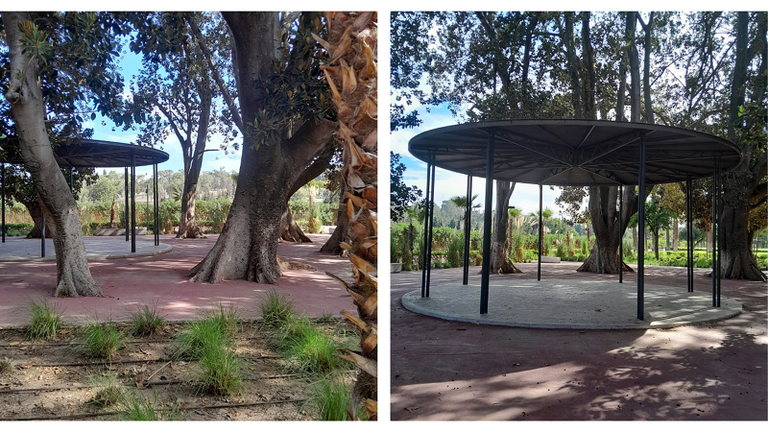
Continuing my walk, I came across a circular structure with a flat roof supported by slender metal posts. The structure is located in the open air, surrounded by tall trees and lush greenery. The ground beneath the structure appears paved, with a mixture of sunlight and shadows cast by the trees and the structure itself. The setting is natural and serene, suggesting a park or garden.

The Lahboul Garden, with its beautiful trees and relaxation areas, also hides these structures that tell of a rich past. The pillars you see here were part of the infrastructure of the imperial city built by Moulay Ismaïl, a titanic project that left a lasting mark on Meknes. This sultan not only transformed the city with his giant walls and palaces, but also with buildings in public places like this garden.
These pillars are original pieces that Sultan Moulay Ismaïl brought back from the ‘Badii’ palace in Marrakech and reused for the construction of his kasbah in the city of Meknès, his capital. These elements were integrated by landscape architect Jean-Claude Nicolas Forestier, adding a mythological and artistic touch to the garden.
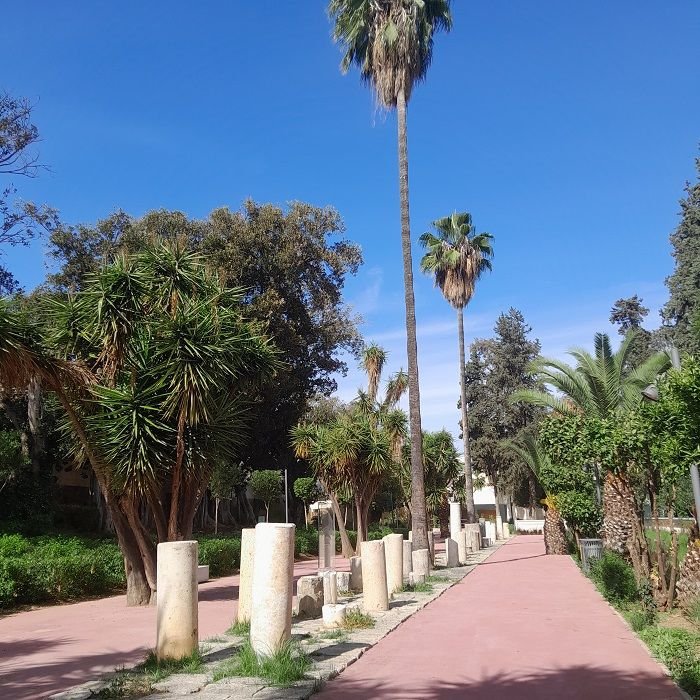
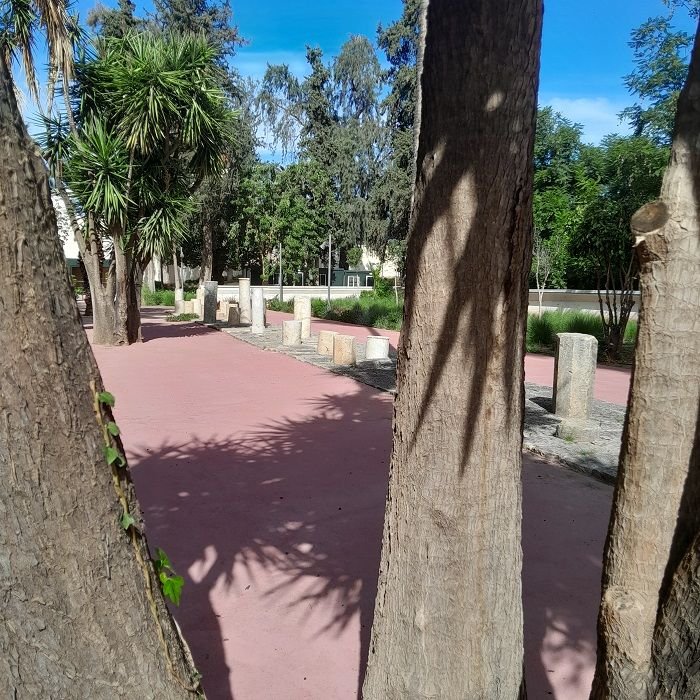
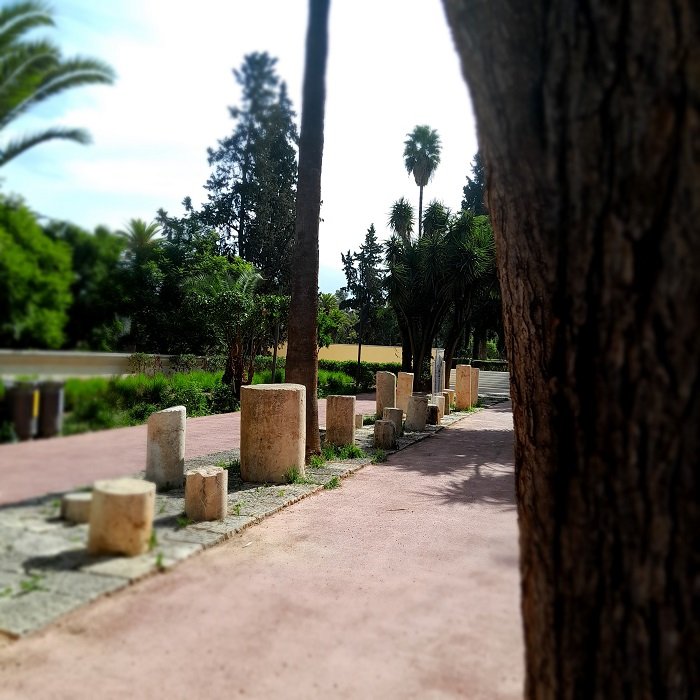
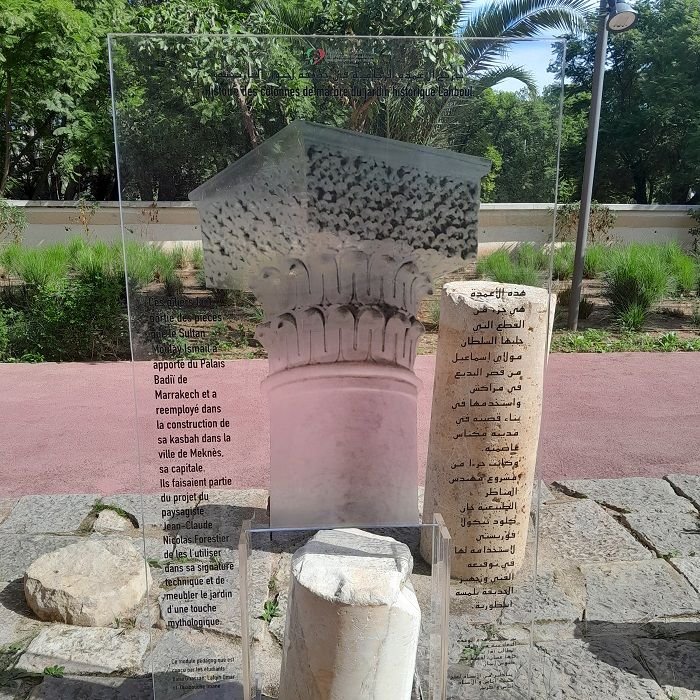
As I continued my walk, I came across a small open-air theatre that is very well known in Meknes. This theatre, built in the 1930s, is still used today for performances and cultural events. It's a true testament to the city's artistic heritage, and adds a unique touch to the garden. I could imagine shows from the past, with Meknassis gathered under the stars to watch plays or listen to concerts in the middle of nature.
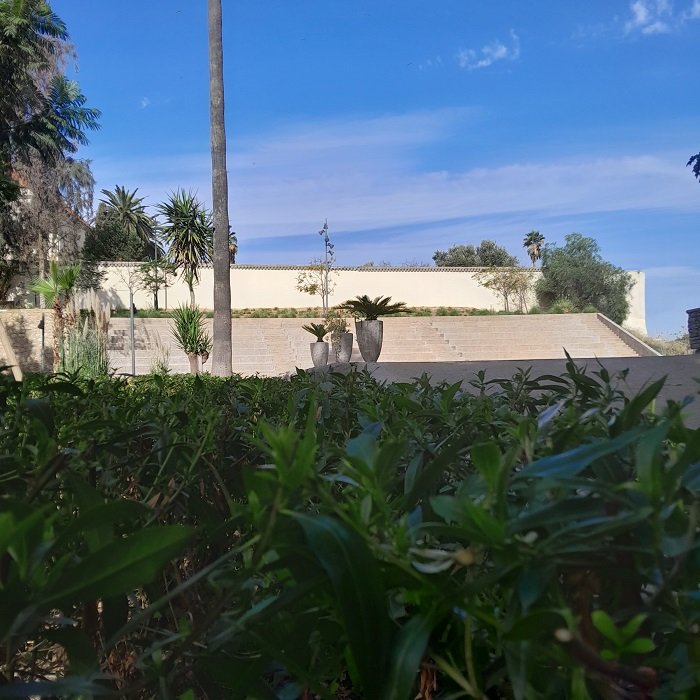
Another special feature of Lahboul Garden are the little bird cages that can be found everywhere. It may seem insignificant, but these birds represent a link with the history of the garden. Indeed, Sultan Moulay Ismaïl, who was a great lover of nature, used to collect exotic birds and introduce them into the royal gardens. Even today, birdsong is an integral part of the garden's atmosphere.

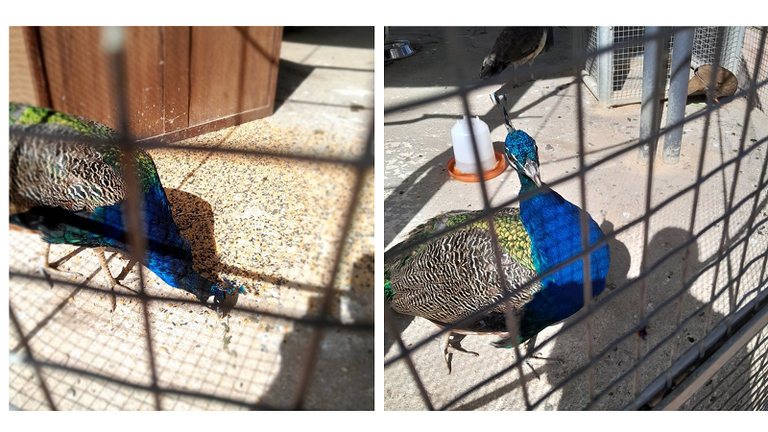
The Lahboul Garden is also surrounded by historic buildings that recall the importance of Meknes in imperial times. Stone walls, arcades and traditional fountains complete the picture, offering a real immersion in the city's glorious past.
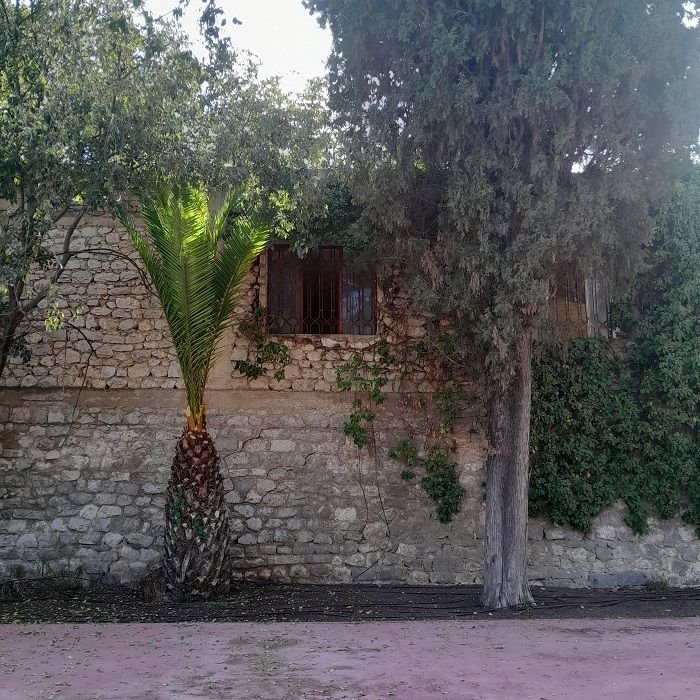
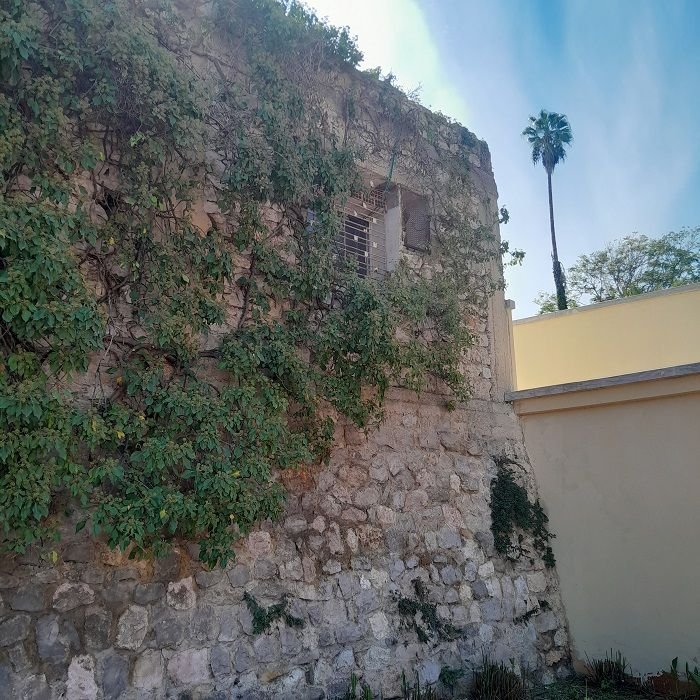
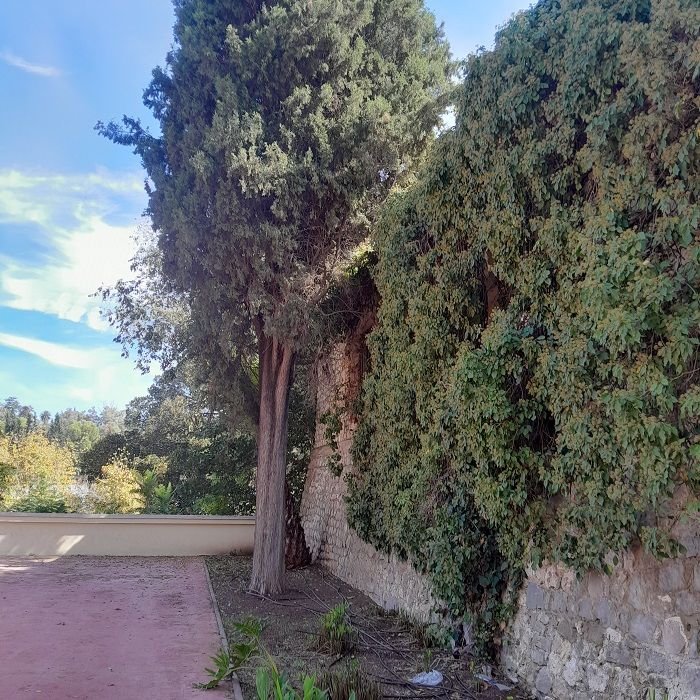
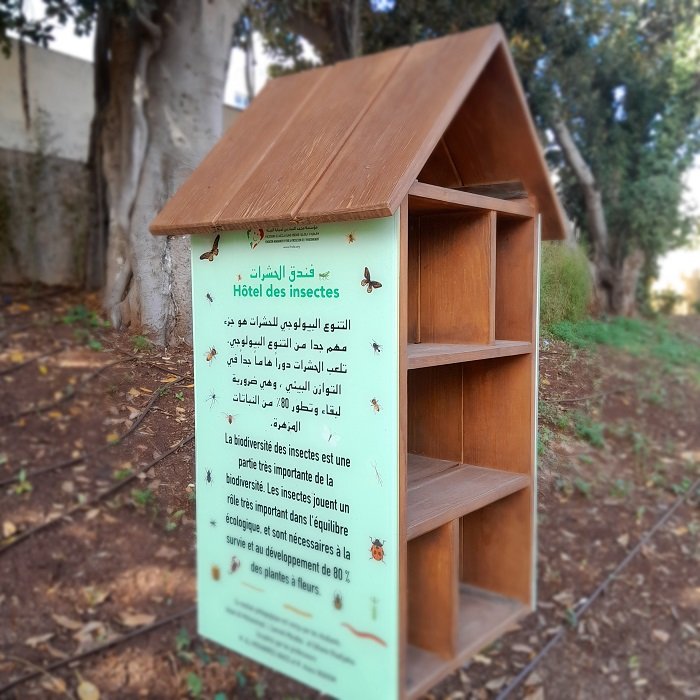
While wandering around the garden, I came across this charming ‘Insect Hotel’, a shelter designed to protect the essential biodiversity of our environment. It's fascinating to see how even the smallest creatures play a crucial role in the ecological balance! I've read the plaque explaining the importance of insects to the survival of flowering plants. A simple but powerful ecological gesture that can be found at the heart of Lahboul's natural environment!
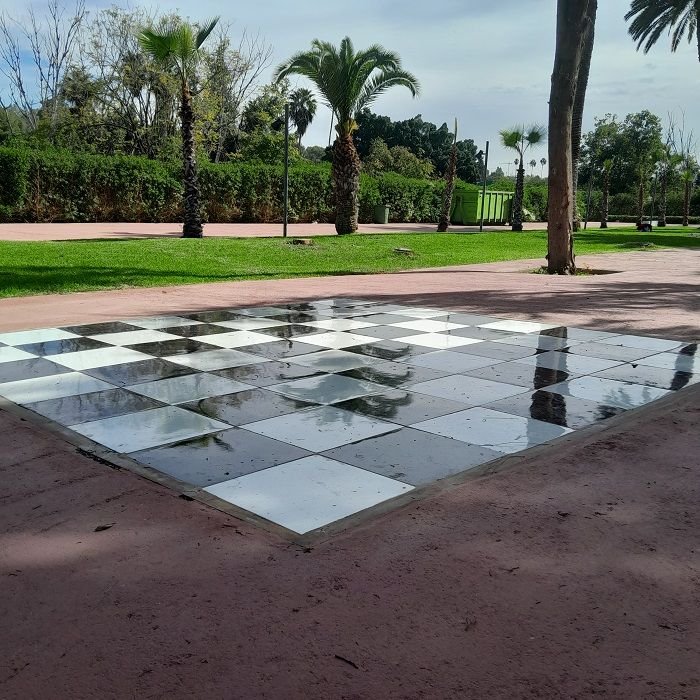
A little further on, I discover a giant chessboard built into the garden floor. It's an inviting place to relax, reflect or perhaps even play a game of chess with friends! With its elegant design and geometric layout, it brings a touch of modernity to this historic natural setting .
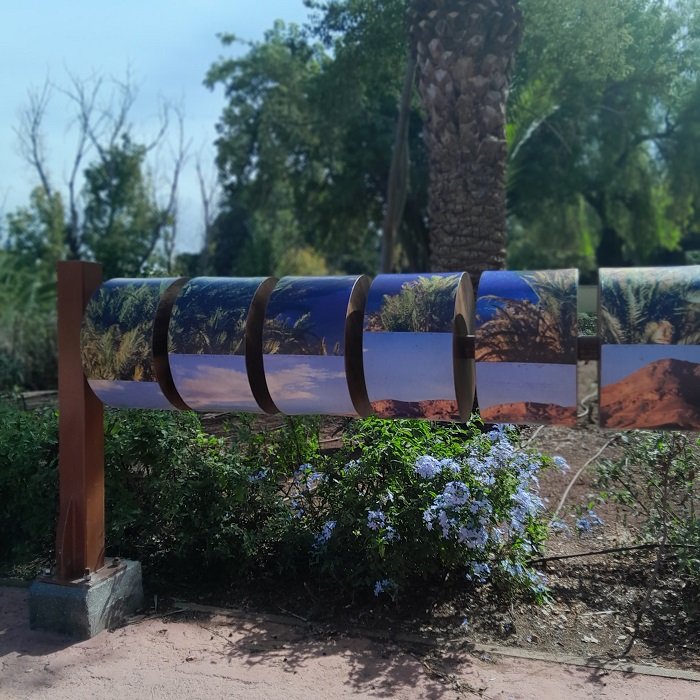
Finally, one of the garden's most unique installations is this rotating artwork made up of several photographs. They capture the beauty of the Moroccan landscape and invite visitors to turn the panels to discover different scenes. This artistic detail adds a cultural touch that links nature and art, offering walkers a little visual surprise on their stroll.
If you're ever in Meknes, I highly recommend a visit to the Lahboul Garden. Whether you're a history buff, a nature lover or just looking for a moment of peace and quiet, this place has it all. Personally, I loved spending time there, and I'll be sure to return again and again to rediscover its hidden treasures.
Thank you for taking the time to read this article and for accompanying me on my visit to the Lahboul garden. I hope it has inspired you to visit this charming place.
See you soon for another post!

I'd like to thank you warmly for your feedback on my content. I'd also like to thank you for sharing and upvoting. Your support and encouragement motivate me enormously to continue sharing my experiences with you. Thanks to you, I feel inspired to create even more quality content!

Photos taken by my own phone (Samsung Galaxy A04s).





